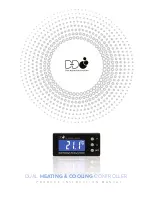
www.petsafe.net
EN
ES
FR
IT
NL
DE
8
.
Introducing Your Cat to the Litter Box
Some cats may require an adjustment period to acclimate to a new litter box. Here are a few tips to help with the transition:
• Place the new Litter Box next to your cat’s old litter box.
• Allow your cat to have access to both the old and new litter boxes for at least a week. This time may vary based on the temperament of your cat.
• You may want to leave the system unplugged to allow your cat to use the new Litter Box without any distractions.
Note: You must manually scoop solid waste from the Litter Box during the transition.
• Allow your cat’s old litter box to remain dirty. Cats prefer a clean litter box and this will make the new Litter Box more appealing.
• Add a few handfuls of Crystal Litter to your cat’s old litter box before transitioning to the new Litter Box. Add a few small handfuls of your cat’s
old litter to the Crystal Litter Tray after the transition.
• Once your cat is acclimated to the new Litter Box, plug in the system and remove the old Litter Box from the area.
Changing the Litter Tray
Do not add litter or remove solid waste during normal operation. The Crystal Litter will remain clean for weeks at a time. See the chart below for the
recommended Litter Tray replacement schedule.
Note: Please see page 2 for important safety information.
1. Gently shake the Litter Box to reduce Crystal Litter that may have accumulated behind the Rake. This
will reduce or prevent spillage that may occur when lifting the Litter Box Frame.
2. Lift the front of the Litter Box Frame until it is standing on its end (
A
) and remove the Litter Tray.
3. Remove the cover from under the Litter Tray and place it on top of the Litter Tray (
B
). Secure with tape
if desired or place within a drawstring rubbish bag.
4. Dispose of the used Litter Tray.
5. Install a new Litter Tray as shown in the “Install the Litter Tray” section.
If solid waste is collecting outside of the Waste Compartment, it is time to change the Litter Tray.
Recommended Litter Tray Replacement
1 Cat
20 − 30 days
2 Cats
10 − 15 days
3 Cats
7 − 10 days
Maximizing Litter Tray Life
• The Litter Box works best if placed away from areas of high humidity such as bathrooms and showers.
• Cats with diets high in crude fiber and ash content will produce more solid waste. This may prematurely fill the Waste Compartment. To maximize
Litter Tray life, consider changing the cat’s diet to a brand with no by-products or fillers.
• Kittens will go through Litter Trays faster than adult cats. Typically once kittens reach the 6-8 months age-range their Litter Box frequency lessens.
If your kitten is under 6 months of age leave the unit UNPLUGGED and scoop waste until kitten is 6 months old.
• Stirring the Crystal Litter once a week may better accommodate cats that are ill or have a high urine output. Stirring will distribute saturated
crystals and extend the life of the Litter Tray.
• Be sure to mix in the Crystal Litter from behind the Rake and along the sides of the Litter Box. This will benefit cats that do not dig or that
consistently urinate in the same spot. Do not mix in Crystal Litter from under the Waste Compartment.
Increased elimination habits of cats who consume a diet high in crude fiber, ash and by-products, cats older than 10 years of age
and cats with diabetes, kidney and thyroid problems may result in a shorter Litter Tray life. Kittens may have softer stool than mature
cats, which increases the likelihood that it may stick to the Rake.
B
A









































